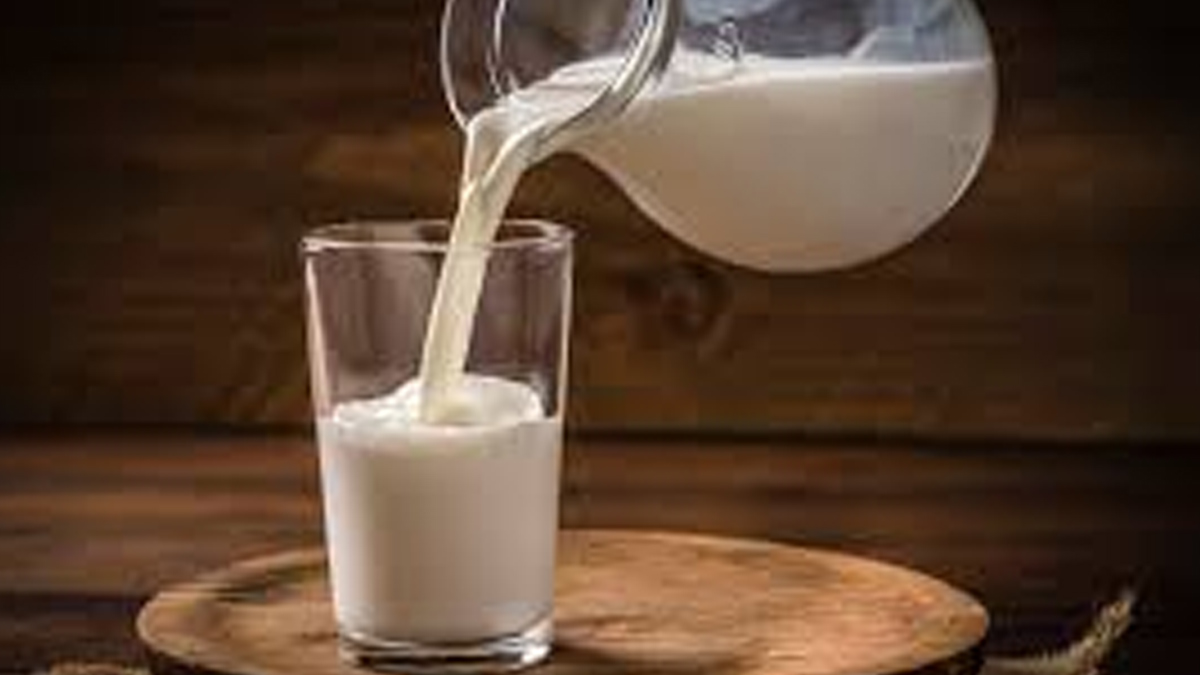
Raw milk has often been touted as a wholesome, natural alternative to pasteurized milk. However, a new study conducted by Stanford University is shedding light on a significant health risk associated with raw milk: the potential for flu virus transmission. Researchers found that the influenza virus can remain active in raw milk for up to five days when stored at refrigerated temperatures, raising public health concerns about its safety. This discovery comes amid ongoing bird flu outbreaks in dairy cattle, sparking fears of a possible new pandemic.
Table of Content:-
The Hidden Dangers of Raw Milk
Raw milk, which is unpasteurized, retains natural enzymes, nutrients, and probiotics, attracting a growing number of health-conscious consumers. Over 14 million Americans drink raw milk annually, believing it offers superior health benefits compared to pasteurised milk. However, the absence of pasteurisation — the process that involves heating milk to kill harmful bacteria and viruses — leaves raw milk vulnerable to contamination.
Health authorities like the Food and Drug Administration (FDA) and the Centers for Disease Control and Prevention (CDC) have long warned about the risks associated with raw milk. It has been linked to more than 200 illness outbreaks caused by harmful bacteria such as E. coli and Salmonella. Now, this new study adds the influenza virus to the list of potential dangers, particularly for vulnerable groups like children, the elderly, pregnant women, and those with compromised immune systems.

Influenza Virus in Raw Milk: Key Findings
The Stanford University study investigated how long the H1N1 PR8 influenza strain could survive in raw milk stored at typical refrigeration temperatures. Researchers found that the virus remained infectious for up to five days, posing risks of potential transmission to humans.
According to Mengyang Zhang, the study’s co-lead author, "The persistence of infectious influenza virus in raw milk for days raises concerns about potential transmission pathways." The virus could contaminate dairy equipment, surfaces, and the surrounding environment, increasing the chances of spread to both animals and humans.
Also Read: Delhi-NCR Chokes on 'Poor' AQI: Govt Revises GRAP Norms to Combat Toxic Air — Key Changes Revealed!
Additionally, the study detected flu virus RNA in raw milk for at least 57 days. While viral RNA itself does not cause infection, its prolonged presence complicates environmental monitoring and food safety assessments. Pasteurization was found to effectively destroy the infectious influenza virus and reduce viral RNA by nearly 90%, reinforcing the importance of this safety process.
The Bird Flu Connection
The timing of these findings is particularly concerning given the ongoing spread of avian influenza (bird flu) among dairy cattle. Bird flu has the potential to jump from animals to humans, much like the 2009-2010 swine flu pandemic that caused up to 1.4 billion infections worldwide. While bird flu has not yet triggered a human pandemic, experts fear it could mutate and become more dangerous.

The discovery of bird flu in cattle has raised alarms about the potential transmission of the virus through milk and other dairy products. Given the ability of the flu virus to survive in raw milk, the risk of human infection through consumption becomes a serious concern.
Why Pasteurisation Matters
Pasteurisation is a proven method for eliminating harmful pathogens from milk. By heating milk to specific temperatures, this process effectively kills bacteria, viruses, and other harmful microorganisms. The Stanford study emphasises that pasteurised milk poses significantly lower health risks compared to raw milk.
Also Read: Paracetamol Warning: New Study Links Painkiller To Heart, Kidney And Gut Issues In Older Adults
Alexandria Boehm, the senior author of the study, stated, "This work highlights the potential risk of avian influenza transmission through consumption of raw milk and the importance of milk pasteurisation."
Implications for Public Health
This research underscores the need for rigorous monitoring systems to track flu viruses in dairy environments. Improved surveillance, such as analyzing wastewater from dairy facilities, could help detect viral activity early and prevent potential outbreaks. The study's authors advocate for better safety measures to mitigate risks associated with raw milk, especially in light of bird flu's spread among livestock.
Bottomline: Weighing the Risks
While raw milk enthusiasts promote its perceived health benefits, this study highlights the substantial risks it can pose. The ability of the influenza virus to linger in raw milk for days presents a real public health concern. In a time when the threat of new pandemics looms large, the importance of pasteurization cannot be overstated. For consumers, particularly those in vulnerable groups, the safest choice remains pasteurized milk to avoid potential exposure to harmful pathogens.
Also watch this video
Read Next
Paracetamol Warning: New Study Links Painkiller To Heart, Kidney And Gut Issues In Older Adults
How we keep this article up to date:
We work with experts and keep a close eye on the latest in health and wellness. Whenever there is a new research or helpful information, we update our articles with accurate and useful advice.
Current Version